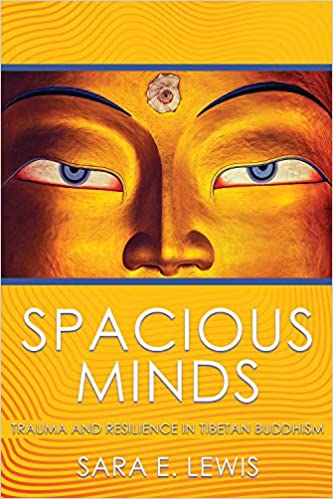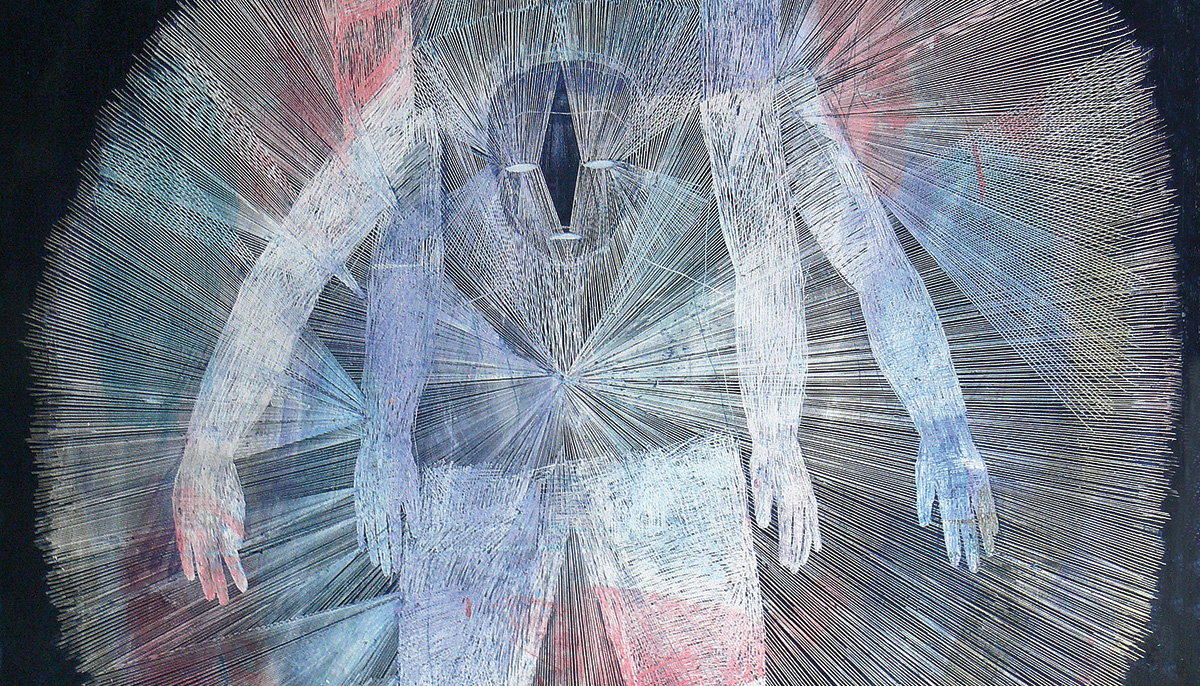Buddhism in the West is having a difficult time. With allegations of misconduct made against teachers in several of our communities, there is now widespread disillusionment and organizational chaos. Of course, similar problems exist in other faith traditions, and the #MeToo movement has been revealing these issues throughout all levels of society. Many of us are experiencing personal spiritual crises and grappling with the reemergence of pain from past traumas, oppression, and other abuses of power to which we’ve been subjected. For those in positions of privilege and seats of power, the challenge has been to listen and acknowledge that others have been suffering.
We are at a cultural moment at which collective awareness of trauma is higher than ever. Survivors and their allies are demanding to be heard and calling for meaningful institutional transformation. Trauma-informed care is increasingly expected, and leaders are challenged to create new organizational structures and systems of accountability that are just and fair, particularly for those most vulnerable.
In spite of this lotus blossoming out of the mud, Western Buddhists remain confused. Individuals and organizations alike are trying to figure out what trauma is, who decides, and what can and should be done about it individually and collectively. There is a desire to apply Buddhist beliefs and practices in ways that are beneficial; there is also the very real danger of inadvertently falling victim to spiritual bypassing. In this context, Spacious Minds: Trauma and Resilience in Tibetan Buddhism, by Sara Lewis, arrives at just the right moment.
In the Tibetan culture described by Lewis, compassion is not just a vague moral imperative. Rather, it’s a pragmatic skill to transform the experience of suffering.
The result of a decade’s work, Lewis’ book reports the results of her anthropological research living within the Tibetan exile community in Dharamsala. She reminds us of the plight of the Tibetan diaspora and illuminates how ordinary Tibetans apply Buddhism amid tremendous suffering and widespread personal and collective trauma. Although she offers few words directly to Western Buddhists about our current challenges, relevant applications appear throughout. As a psychological anthropologist and clinical social worker, she handles these topics with intellectual sophistication, nuance, and sensitivity.
Lewis provides a brief cultural and political history of Tibet and reveals internal tensions that are often overlooked. She warns against idealization of the Tibetan people and reminds us they are a diverse community with diverse points of view. There are tensions between ethnic groups, generations, refugee communities, and those still living within China. Nonetheless, common assumptions rooted in a Buddhist worldview underlie even the most diverse points of view. The author explains how even Tibetans who aren’t particularly religious seem to share these core assumptions, much like how secular Westerners might nonetheless espouse values or beliefs that originate from the Christian tradition.
Two such underlying assumptions the book explores in depth are karma and reincarnation. Many Western Buddhists hold these ideas lightly, if at all. We may wince when we hear Tibetans explain it is a person’s karma to be tortured, for fear of aligning with oppressive institutions or blaming the victim. Lewis emphasizes that this is not the experience of the Tibetans with whom she spoke. Instead, the view of karma, for them, provides meaning to suffering and seems to promote resilience.
The explanatory model of karma and reincarnation also helps Tibetans contextualize harmful behavior in a way that seems to facilitate the generation of compassion—even for those who oppress them. It is harder to dehumanize or hate an abuser in a worldview that presupposes that the very fact you are in relation with one another means you had some prior connection in a past life (and likely will again in the future). Further, if one views being harmed as repayment of a karmic debt, then the pain itself can be accepted more readily and even transmuted into an experience of empowerment. Lewis shares numerous narratives providing evidence for this mindset, such as one individual who described thinking “it is my karma to stay in prison. This helped me to deal with suffering because I realized that I created it myself. Actually, I had a great opportunity to experience a lot of suffering, which meant I was purifying obscurations [karma]. Thinking like this, my mental problems gradually diminished.”
Many readers will likely be struck by the differences between the Tibetan approach and their own or the one of their home culture, but Lewis herself does not engage in comparison, nor does she ever suggest one approach is better than the other. Instead, Lewis challenges us to inhabit another way of viewing the world, and in particular a Buddhist-informed way of making sense of hardship. Lewis draws a connection between these coping strategies and Buddhist teachings such as the six paramitas, stating, “The training in the six perfections is meant to take place ‘on the ground,’ so to speak, meaning in everyday situations. This is what people mean when they talk about taking adversity on the path … Monks and nuns in Dharamsala talk explicitly about using the six paramitas to cope with adversity. Laypeople do not necessarily use this term by name (although some do), but many of the ‘perfections’ such as generosity and discipline form the bedrock of how Tibetans cope with adversity in life.”
Spacious Minds demonstrates that the cultivation of virtuous qualities can be transformative when approached without the self-aggression common to Westerners who are trying to “fix” themselves. Although the author observed a “fake-it-till-you-make-it” quality among some Tibetans, she also noticed that this approach seemed to be working for them. While many in the West may feel invalidated by a comment such as “It’s not so bad” or “Think of those who have it worse,” in Tibet such comments seem to function as useful reminders to train one’s mind, to cultivate a more flexible point of view, and to not become too fixed on a single narrative with oneself at the center.
These strategies largely derive from lojong, or mind training, which is of central importance to the Tibetan Buddhist approach to working with trauma and suffering. In the West, lojong is best known as a series of pithy contemplations used to steer the mind toward teachings of compassion and emptiness. Ordinary Tibetans do not necessarily contemplate lojong slogans every day. Rather, lojong’s underlying assumption that the mind is fundamentally workable has become a central component of the Tibetan worldview. The teachings on emptiness contained within lojong also become a useful tool in times of difficulty. By relating more fluidly to both the idea of a “self” and the mind, individuals focus less on their experiences or memories of personal harm—and less on the need for personal healing afterward. Instead, Lewis writes, “when Tibetans find themselves in difficult circumstances, they argue that one should actually take the focus off of the self to skillfully cope with the problem. They should contemplate emptiness and impermanence to recognize that fundamentally the self is an illusion.”
In stark contrast to the Western psychotherapeutic assumptions that self-improvement and sharing trauma narratives are inherently healing, Tibetans cultivate sems pa chen po—a spacious, flexible mind—which is “an approach for meeting life’s inevitable problems with openness, humor, and compassion.” Instead of an ideology of self-care, focusing on managing stress through attention and nurturance of the self, Lewis writes that “the perspective in Dharamsala is much more radical in that it delegitimizes the utility of hanging on to the stress (no matter how great) in the first place.”
In the Tibetan culture described by Lewis, compassion is also not just a vague moral imperative. Rather, it’s a pragmatic skill to transform the experience of suffering. In a vivid example, the author recounts the story of a nun who described feeling compassion for all rape victims when she herself was being assaulted. By such a radical change in view, her suffering connected her to a vast web of shared human hardship. Lewis does not share this example as something to which others should aspire, but nor does she invalidate or dismiss it. As a social scientist sharing what she has observed, her approach remains curious, neutral, and informative.
Lewis also follows the tradition of participant–observer research by discussing her own impressions and interactions with community members. After a woman whom she calls Dolma encouraged her to be equanimous when she complained of how she was treated at the visa office, Lewis explains “at the outset I looked at the Buddhist concept of equanimity with some skepticism and long wondered if this were not some kind of internalized oppression. But Dolma’s usage of equanimity did not sound at all like floating on a tranquil lake or a denial of emotion. This kind of btang snyom [equanimity] was more engaged, active, and intentional. It was a way of refusing to be dragged down—an unwillingness to pick up that ball of negative emotions.”
It’s easy to hear these stories and assume such anecdotes must be rare and the individuals extraordinary. However, the author makes a strong case that these qualities exist throughout Tibetan society. As she states, “Tibetans do not always think about others; they are not always content. But a cultural understanding of what one ought to do in the face of suffering (cultivate compassion, reflect on emptiness) guides their recovery.”
Spacious Minds explores whether this approach may be a subtle form of internalized oppression. Lewis skillfully argues that the act of establishing inner agency through mind training represents a nimble application of self-efficacy in a context where outer realities remain oppressive. If nothing outside of oneself is the source of distress, if the cause of suffering is truly the mind, then the locus of control remains within and we retain fundamental authorship of our own experience.
Anticipating the fear that such an approach may lead to complacency and inaction on the sociopolitical level, the author recounts the methods through which Tibetans engage politically. In a chapter that will be illuminating for those less familiar with global mental health and humanitarianism, Lewis describes how Tibetans borrow the idea of the “trauma narrative” and use it not as a psychotherapeutic intervention but as a means of galvanizing international action. She observes little discussion among Tibetans of their personal experiences of torture and hardship, and even a “purposeful refusal to craft trauma narratives, which is seen as antithetical to healthy coping. Indeed, elaborating and talking about past suffering is considered highly ineffective and even harmful.” This changes dramatically in contexts where Westerners are present and their political support is being sought. At those times, Tibetans “readily distribute bloodied photographs and trauma narratives to journalists and foreign researchers with hopes of garnering international support. They carefully link names and personal stories with statistics, often emphasizing how peaceful and humble individuals are brutally treated.” This demonstrates a savvy appropriation of storytelling to personalize the suffering of Tibetans and increase financial, political, and pragmatic support even as the same individuals refuse trauma interventions that focus on revisiting the very same past traumas.
Within our Western Buddhist organizations, we attempt to create a shared culture rooted in Buddhist traditions. Yet we cannot ignore the influence of local culture, the cultural traditions of our diverse members, and even the religions within which we have been raised. The Shambhala Center in my hometown of Boston will have some shared culture with centers in other parts of the world, but much will also reflect the local membership, which is largely white American, informed by European heritage and largely Christian and Jewish religious upbringings.

Trauma and Resilience
in Tibetan Buddhism”
by Sara E. Lewis
Cornell University
Press, 2020
252 pages; $24.95
While it is easy to give lip service to the importance of diversity and cultural competence within our communities and as healers, it quickly gets challenging when we start to talk about trauma. The idea of “trauma” itself is a relatively recent construction; its meaning varies significantly across cultures. The physical and psychological aftereffects of trauma also vary by culture, as do the methods of healing. Western traditions are heavily influenced by psychiatry, where trauma and its effects have been medicalized, codified into the Diagnostic and Statistical Manual of Mental Disorders, and evidence-based treatments developed. Such a system has virtually no meaning in Tibet, where “mental illness” is neither seen as individual illness nor as strictly mental. Instead, symptoms are conceptualized based on traditional Tibetan medicine and viewed through a Buddhist lens.
Lewis’ expertise in both Western and Tibetan approaches to trauma and resilience could not be more needed at this time, and Spacious Minds distills her expertise in a manner that is scholarly, engaging, and accessible to lay readers, clinicians, and academics alike. Her work is a profound reminder that there is no one right way to understand or experience trauma, nor one right way to recover from it. It explodes common Western understandings and assumptions about the need to create and give voice to trauma narratives, and to engage in mental health treatment as the only means of healing. By showing us how another culture relates to traumatic experiences, Lewis creates a reflective space where we can start to explore the culture-bound ways in which we handle it as well. At a time when many of us are engaged in activism as trauma survivors or their allies, it is essential we maintain cultural humility and question our assumptions. If we are going to heal, particularly in our diverse and transcultural Western Buddhist organizations, we must maintain our own spacious minds and accommodate the many potential pathways of doing so.

